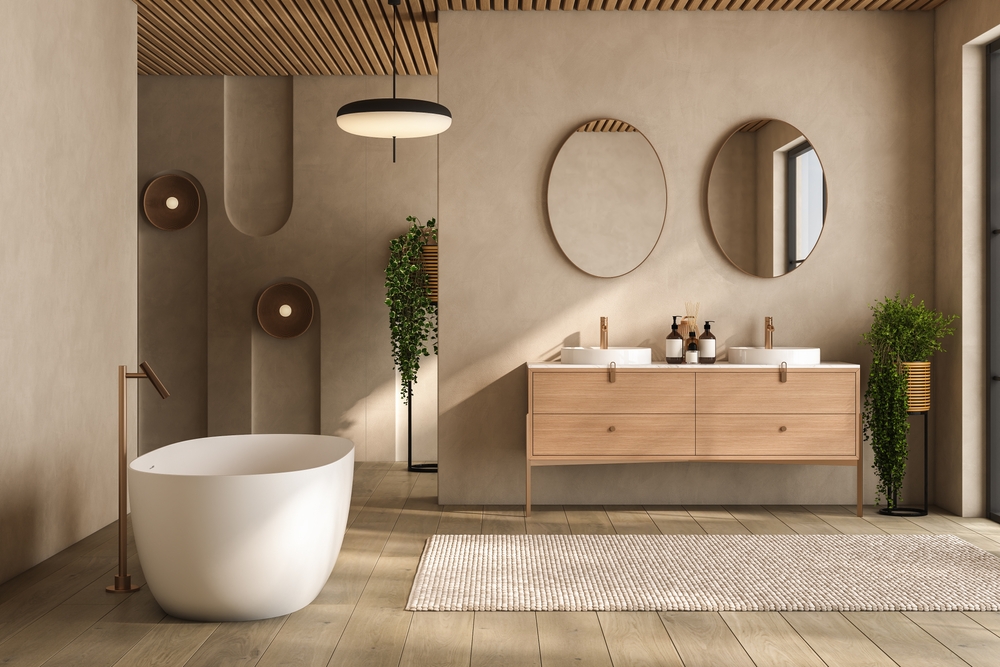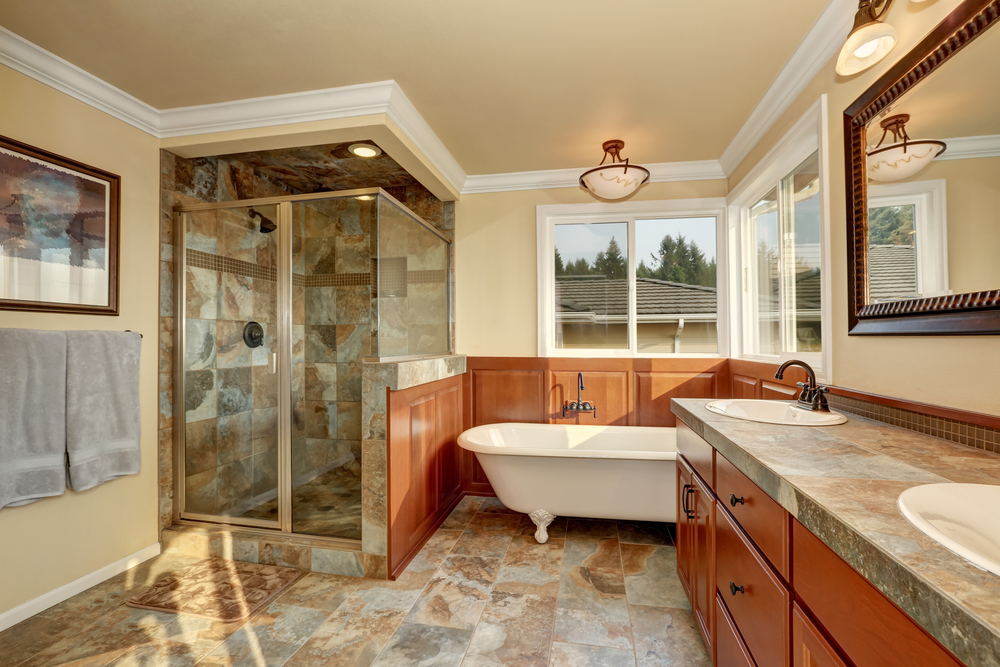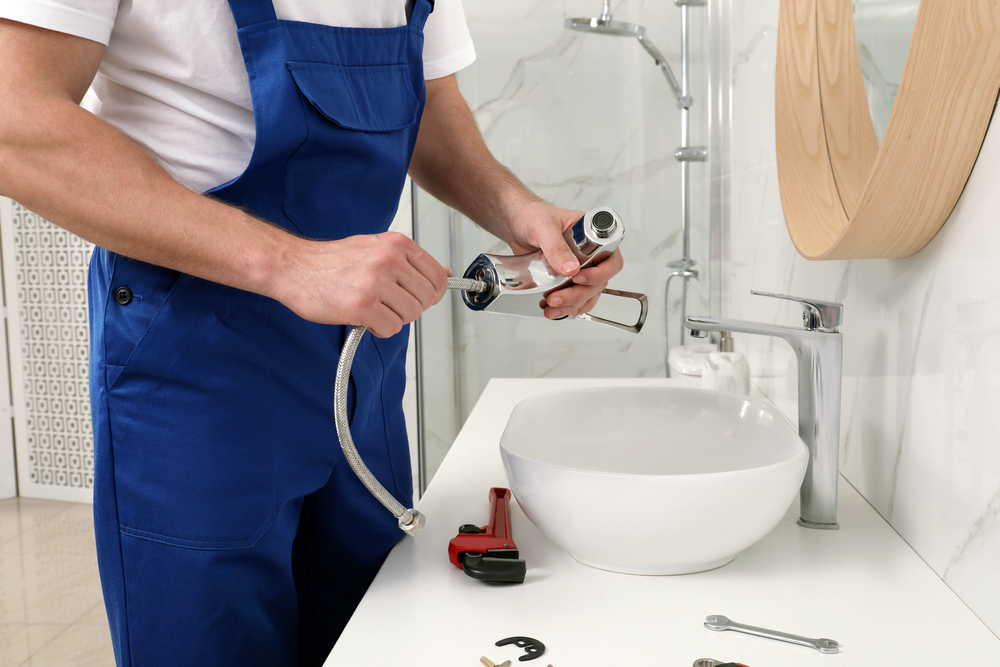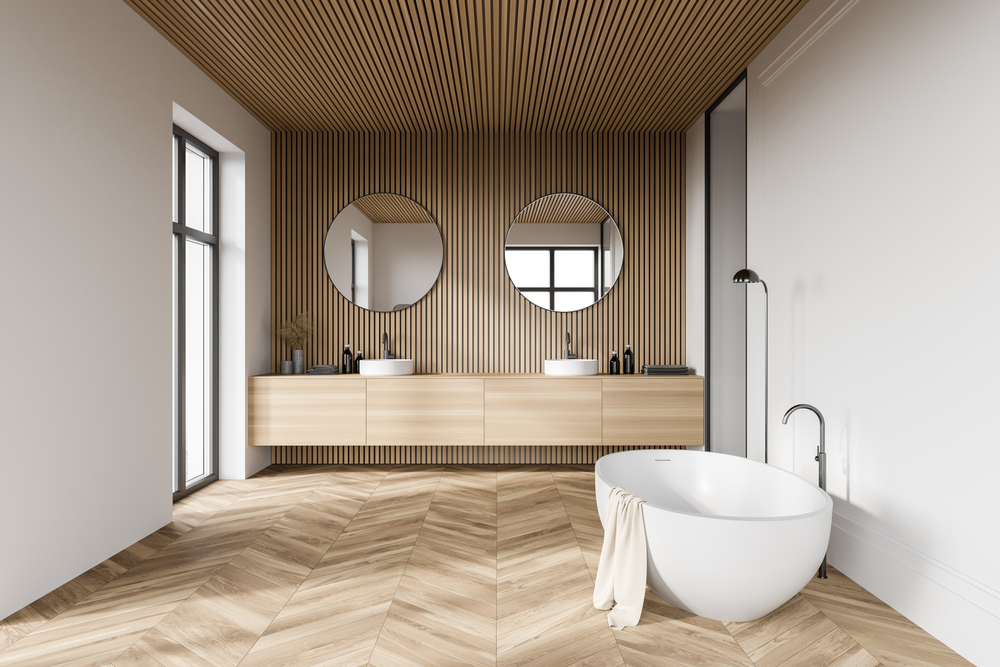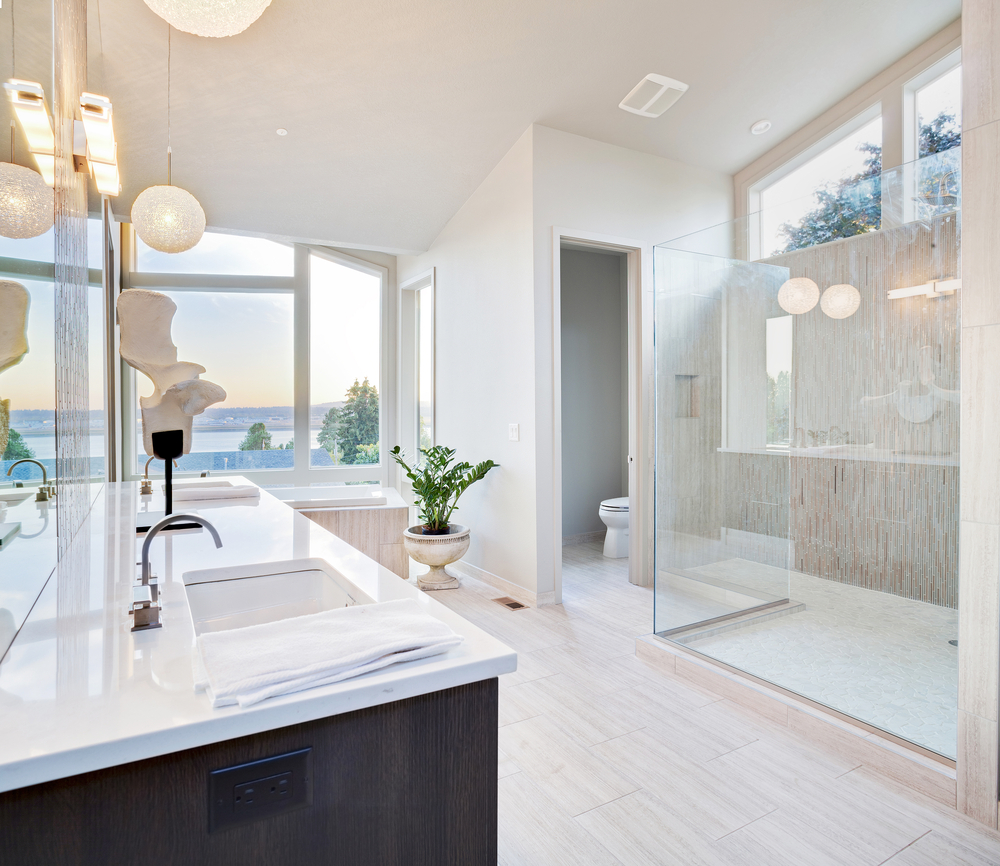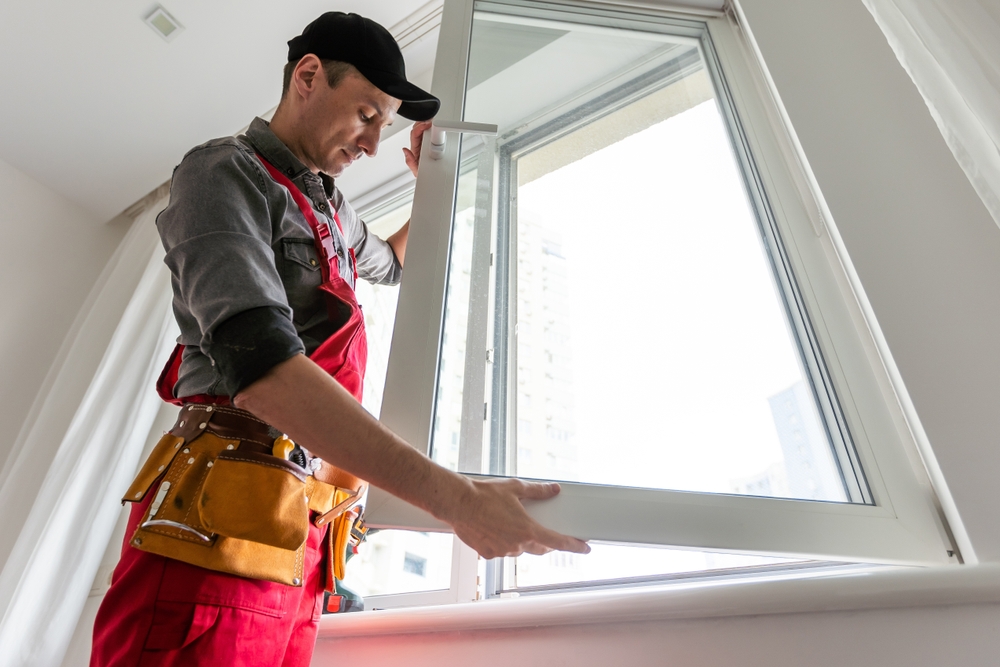
Remodeling a bathroom in Vancouver, WA, can be an exciting project that transforms your daily routine and adds value to your home. But this journey from old to new is also filled with potential pitfalls that can turn your dream into a costly headache. From navigating local regulations to dealing with our region’s persistent moisture, homeowners often encounter problems that could have been avoided with proper planning. Understanding the most common mistakes is the first step toward a successful remodel, saving you time, money, and frustration.
This guide will walk you through the top five bathroom remodeling mistakes we see in the Vancouver area. By learning what to watch out for, you can ensure your project runs smoothly and results in a beautiful, functional space you’ll love for years to come.
Mistake #1: Skipping Permits and Local Regulations
One of the most significant and costly errors a homeowner can make is proceeding with a bathroom remodel without the proper permits. It might seem like a way to save time and money, but this shortcut often leads to major complications.
Why Permits Are Crucial in Vancouver WA
Permits are not just bureaucratic red tape; they are a system of checks and balances designed to protect you, your family, and your investment. In Vancouver, Washington, the city has specific building codes that ensure all construction is safe, structurally sound, and meets modern standards. A permit means that your project plans have been reviewed by the city and that a qualified inspector will verify the work at critical stages.
For bathroom remodels, permits are generally required for any changes involving plumbing, electrical wiring, or structural modifications. This includes moving a toilet, adding a new shower, rerouting pipes, or altering walls. Following this process ensures that your new bathroom is not only beautiful but also safe and compliant. A properly permitted remodel gives you peace of mind, knowing the work was done correctly and to the highest safety standards.
Consequences of Unpermitted Work
The fallout from unpermitted work can be severe and far-reaching. If the city discovers the unpermitted construction, they can issue a “stop work” order until you obtain the correct permits, which can involve creating retroactive plans and paying penalty fees. You may also be required to tear out finished work, like tile and drywall, so an inspector can see the plumbing and electrical systems underneath. This means paying for the same job twice.
Furthermore, unpermitted work can create major problems when you decide to sell your home. It can be a red flag for potential buyers and their lenders, and you may be required to disclose it. Many insurance companies will not cover damage caused by unpermitted work, such as a fire from faulty wiring or water damage from improper plumbing. What started as a shortcut can quickly become a long and expensive detour.
Tips for Ensuring Your Remodel Meets Code
Navigating the permit process doesn’t have to be complicated, especially when you have the right team on your side.
- Always hire licensed contractors: A professional and licensed contractor, like Clean Cut Renovations, understands Vancouver’s specific codes and permitting process. We handle the paperwork and schedule inspections, so you don’t have to worry about it.
- Check with the City of Vancouver: Before you begin, you or your contractor should confirm which permits are needed for your specific project. The city’s building department is a valuable resource for homeowners.
- Keep all documentation: Maintain a file with all permits, inspection reports, and approvals. This paperwork is proof that your remodel was completed to code and can be a valuable asset for future reference or resale.
Mistake #2: Poor Moisture Management
Vancouver and the Pacific Northwest are known for damp, rainy weather. This climate makes proper moisture management inside your home—especially in the bathroom—absolutely critical. Failure to control moisture leads to mold, mildew, and rot, which can cause health problems and expensive structural damage.
Common Moisture Problems in Bathrooms
Bathrooms are the wettest rooms in any house. Daily showers and baths release a significant amount of steam and humidity. Without a clear path to escape, this moist air gets trapped, seeping into drywall, settling on surfaces, and creating the perfect breeding ground for mold and mildew. Poorly sealed showers, tubs, and floors allow water to penetrate walls and subfloors, leading to wood rot and compromising your home’s structure over time. A small leak or poor ventilation can quickly escalate into a massive problem hidden behind your beautiful new tile.
How to Properly Waterproof and Ventilate
A successful bathroom remodel involves creating a multi-layered defense against moisture.
- Install moisture-resistant materials: In wet areas like shower enclosures, use high-quality, moisture-resistant drywall (green board) or, even better, a cement backer board. These materials won’t crumble or degrade when exposed to water.
- Use a waterproofing membrane: Modern waterproofing systems, such as liquid-applied membranes or sheet membranes, create a seamless barrier behind your tiles. This step is crucial for preventing water from ever reaching the wall studs.
- Ensure proper ventilation: An exhaust fan is not a luxury; it’s a necessity. Your fan should be sized correctly for your bathroom’s square footage and, most importantly, must vent directly to the outside of your home—not into the attic or a wall cavity, which just moves the moisture problem elsewhere.
Signs of Potential Mold or Water Damage
Even with the best planning, it’s wise to know the warning signs of moisture issues.
- A persistent musty odor: This is often the first indicator of hidden mold or mildew.
- Peeling paint or wallpaper: Moisture getting into the walls will cause surface finishes to bubble and peel.
- Discolored grout or caulking: Black, pink, or orange spots are signs of mildew growth.
- Soft spots: If a wall or floor feels spongy, you likely have water damage that requires immediate attention.
Early detection can prevent a small issue from becoming a major renovation project all on its own.
Mistake #3: Inadequate Drainage and Plumbing Planning
Your bathroom’s plumbing system is its functional core. While new fixtures and tile are exciting, what happens behind the walls is what truly determines your bathroom’s long-term performance. Poor planning around drainage and plumbing can lead to clogs, leaks, and frustrating water flow issues.
Typical Drainage Issues in Vancouver WA Bathrooms
We often see several recurring drainage problems in bathroom remodels. One common issue is a shower pan that lacks the proper slope, causing water to pool in corners instead of flowing to the drain. This standing water can damage grout and lead to leaks. Another problem is poorly placed drains that create an awkward and inefficient flow. In older Vancouver homes, existing plumbing might be outdated—made of galvanized steel that is prone to corrosion and clogs. Tying new fixtures into an old, failing system is a recipe for disaster.
Planning for Proper Slope and Water Flow
The key to good drainage is gravity. Every surface that handles water needs to be sloped correctly to guide it toward the drain. The industry standard for a shower floor is a slope of at least 1/4 inch per vertical foot. A professional installer knows how to build a custom shower pan or install a pre-fabricated base to achieve this perfect gradient. The placement of drains for sinks, tubs, and showers should also be thoughtfully planned to ensure efficient water removal and easy access for future maintenance.
Avoiding Expensive Plumbing Fixes Later
The best way to prevent future plumbing headaches is to address everything during the remodel.
- Hire licensed plumbers: A licensed plumber is an expert in local codes and best practices. They will ensure every connection is secure, every drain is properly vented to prevent sewer gases from entering your home, and the entire system functions flawlessly.
- Inspect existing plumbing: Before demolition begins, have a plumber inspect the current pipes. If you have old, corroded pipes, the remodel is the perfect and most cost-effective time to replace them. Covering them up with new walls and tile only postpones an inevitable and much more expensive repair down the road.
Mistake #4: Choosing Low-Quality Materials or Fixtures
When you’re looking at a budget, it can be tempting to cut costs by choosing cheaper materials and fixtures. However, this is almost always a mistake in the long run. The bathroom is a high-traffic, high-moisture environment, and materials that aren’t up to the task will fail prematurely.
How Cheap Materials Can Backfire
Low-quality materials often look good at first, but they don’t hold up to the demands of a bathroom. Inexpensive vinyl flooring can peel and discolor, cheap faucets can start to leak, and poorly made vanities constructed from particleboard can swell and fall apart when exposed to humidity. Bargain-bin tiles might be more prone to chipping and cracking, and their inconsistent sizing can make for a messy installation. Choosing these options means you will likely be spending more money on repairs and replacements in just a few years.
Selecting Durable Options for Vancouver WA Homes
Investing in quality materials is an investment in your home’s longevity and your own satisfaction.
- Flooring and Walls: Porcelain and ceramic tiles are excellent choices for bathroom floors and shower walls. They are extremely durable, water-resistant, and easy to clean.
- Cabinetry: Look for vanities made from solid wood or high-quality plywood. Avoid particleboard, especially for cabinets near showers or tubs. A quality finish will also protect the wood from moisture.
- Fixtures: Choose faucets, showerheads, and handles from reputable brands known for their solid brass construction and durable finishes. These will resist corrosion and function smoothly for decades.
Balancing Cost vs. Longevity
Think of your bathroom remodel materials in terms of total cost of ownership, not just the upfront price. A high-quality faucet might cost more initially, but if it lasts 20 years without issue, it is far more economical than a cheaper one you have to replace three times in the same period. By investing a bit more in durable, proven materials, you reduce future maintenance costs and enjoy a bathroom that looks and functions like new for much longer.
Mistake #5: Poor Layout and Design Choices
A beautiful bathroom is more than just nice tile and fixtures; it’s a space that functions effortlessly for your daily life. A poor layout can make even a large bathroom feel cramped and awkward. Common design mistakes can undermine both the aesthetics and practicality of your new space.
Common Layout Mistakes in Small and Mid-Sized Bathrooms
In the typical small or mid-sized bathrooms found in many Vancouver homes, every inch counts. We often see layouts with major flaws:
- Cramped pathways: Not leaving enough clearance around the toilet or in front of the vanity makes the room difficult to navigate.
- Door swing issues: A door that opens inward and nearly hits the toilet or vanity creates an immediate bottleneck.
- Poor lighting: Relying on a single overhead light fixture often leaves the vanity area in shadow, making tasks like shaving or applying makeup difficult.
- Inadequate storage: A lack of well-planned storage leads to cluttered countertops and a chaotic feel.
Maximizing Space and Functionality
Thoughtful design can make any bathroom feel more spacious and organized.
- Smart storage: Consider a vanity with drawers instead of just cabinets. Recessed medicine cabinets and open shelving can add storage without taking up floor space.
- Create visual space: A large mirror or a wall-mounted “floating” vanity can make the room feel bigger by showing more floor space. A glass shower door also opens up the room far more than a shower curtain.
- Optimize flow: Think about the sequence of use. The placement of the toilet, sink, and shower should make sense for your daily routine. Ensure there’s enough “elbow room” at each station.
Hiring a Designer vs. DIY Planning
While DIY planning can be rewarding, the expertise of a professional designer is invaluable for avoiding costly layout mistakes. A designer is trained to see possibilities you might miss and can create a layout that maximizes every square foot of your bathroom. They understand building codes, clearances, and the principles of good design. Working with a design-build firm like Clean Cut Renovations gives you the benefit of an integrated team, where designers and builders collaborate to ensure the final layout is both beautiful and buildable.
Bonus Tips for a Smooth Vancouver WA Bathroom Remodel
Beyond avoiding the top five mistakes, here are a few extra tips to ensure your project is a success:
- Always work with licensed and insured contractors: This protects you from liability and ensures the person working on your home is qualified.
- Plan your budget carefully: A realistic budget is your roadmap. Be sure to include a contingency fund of 10–15% to cover any unexpected costs that may arise, such as discovering hidden water damage after demolition.
- Schedule inspections at key milestones: Don’t wait until the end. Inspections for framing, plumbing, and electrical should happen before the walls are closed up to catch any issues early.
Conclusion
Avoiding these common bathroom remodeling mistakes in Vancouver, WA, is key to protecting your investment and creating a space you will truly love. From ensuring all work is properly permitted to choosing durable materials and an intelligent layout, careful planning is the foundation of a successful project. By paying attention to local codes, prioritizing moisture management, and hiring the right professionals, you can save yourself from unnecessary stress, time, and expense.
A well-executed remodel results in a beautiful, functional, and long-lasting bathroom that enhances your home and your daily life. When you’re ready to transform your bathroom the right way, the experienced team at Clean Cut Renovations is here to guide you through every step of the process.

